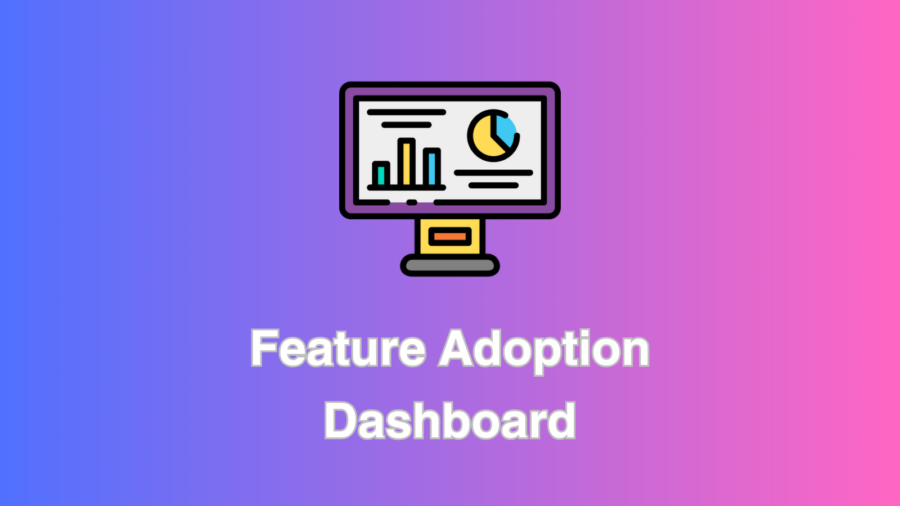Keeping a keen eye on user engagement is paramount. Enter the Feature Adoption Dashboard – a dynamic tool that empowers product managers to gain invaluable insights into user behavior and interaction with new features. In this blog post, we’ll delve into the significance of Feature Adoption Dashboards, their role in shaping product strategies, and provide a step-by-step guide on creating one.
Understanding the Essence of Feature Adoption Dashboards
Feature Adoption Dashboards serve as a visual compass, guiding product managers through the labyrinth of user engagement data. These dashboards are designed to provide a real-time snapshot of how users embrace new product features. Product managers can make informed decisions that drive product success by tracking key metrics such as usage patterns, user demographics, and feature-specific engagement.
Creating a Feature Adoption Dashboard: A Step-by-Step Guide
Step 1: Define Key Metrics
The foundation of any Feature Adoption Dashboard lies in defining the metrics that matter. Identify the specific KPIs (Key Performance Indicators) that align with your product goals. These may include user activation rate, feature usage frequency, and demographics. Ensuring these metrics directly tie back to your product objectives will help craft a dashboard providing actionable insights.
Step 2: Choose the Right Analytics Tool
Selecting the right analytics tool is pivotal in creating an effective Feature Adoption Dashboard. Tools like Google Analytics, Mixpanel, or custom solutions tailored to your product’s needs can provide the necessary data points. Integration with your product is crucial to capture real-time data, enabling you to monitor feature adoption.
Step 3: Data Collection and Integration
Once the analytics tool is in place, ensure seamless data collection and integration. This involves instrumenting your product to capture relevant data points related to feature usage. Collaborate with your development team to implement tracking codes and hooks that feed data into the chosen analytics tool.
Step 4: Design the Dashboard Interface
A user-friendly interface is key to the success of your Feature Adoption Dashboard. Craft a design that allows product managers to quickly glean insights without getting lost in a sea of data. Incorporate visual elements such as charts, graphs, and heatmaps to make the dashboard intuitive and actionable.
Step 5: Set Up Alerts and Notifications
Proactive monitoring is a game-changer in the fast-paced world of product management. Configure alerts and notifications within your Feature Adoption Dashboard to receive real-time updates when certain thresholds are met. This enables product managers to address issues or capitalize on positive trends swiftly.
Step 6: Regularly Review and Iterate
The world of product development is dynamic, and so should your Feature Adoption Dashboard. Schedule regular reviews to assess the dashboard’s effectiveness and make iterative improvements. This may involve tweaking metrics, adjusting data visualization elements, or incorporating feedback from cross-functional teams.
How Product Managers Can Harness Feature Adoption Insights
Now that the Feature Adoption Dashboard is running let’s explore how product managers can leverage these insights to drive strategic decision-making.
1. Identify Feature Performance Trends
By closely monitoring the Feature Adoption Dashboard, product managers can identify trends in how users interact with new features. Are there specific user segments showing higher adoption rates? Are certain features struggling to gain traction? These insights empower product managers to refine their strategies, focusing on what resonates with users.
2. Optimize User Onboarding
User onboarding is a critical phase in product adoption. The Feature Adoption Dashboard can highlight points in the onboarding process where users might drop off or disengage. With this knowledge, product managers can optimize the onboarding experience, ensuring a smoother user transition and higher feature adoption rates.
3. Tailor Marketing Strategies
Understanding which features resonate most with your user base allows for targeted marketing efforts. Product managers can align marketing campaigns with the most adopted features, creating a more personalized and compelling message. This attracts new users and re-engages existing ones by showcasing the value of specific features.
4. Prioritize Feature Development
Feature Adoption Dashboards provide a roadmap for prioritizing future development efforts. Product managers can allocate resources more effectively by identifying which features are driving user satisfaction and engagement. This data-driven approach ensures that development efforts align with user preferences, ultimately leading to a more competitive and user-centric product.
Real-world Examples: Feature Adoption in Action
Let’s examine some real-world examples where Feature Adoption Dashboards have been pivotal in shaping product strategies.
Example 1: Social Media Platform
A popular social media platform implemented a Feature Adoption Dashboard to track the uptake of a new multimedia-sharing feature. The dashboard revealed that users in the 18-24 age group were adopting the feature significantly more than other age groups. Armed with this insight, the product team tailored marketing campaigns specifically targeting this demographic, which substantially increased overall feature adoption.
Example 2: E-commerce Platform
An e-commerce platform leveraged a Feature Adoption Dashboard to monitor the performance of a streamlined checkout process. The dashboard highlighted a drop-off point during the payment stage, prompting the product team to investigate further. Through user testing and feedback analysis, they identified a usability issue and swiftly implemented a solution, resulting in a notable increase in successful transactions.
Conclusion: Empowering Product Managers for Success
In conclusion, Feature Adoption Dashboards are indispensable tools in product managers’ arsenal. By offering a comprehensive view of user engagement, these dashboards enable product teams to make data-driven decisions, optimize user experiences, and propel their products toward success. As the digital landscape evolves, the proactive adoption of Feature Adoption Dashboards will undoubtedly become a hallmark of successful product management.





